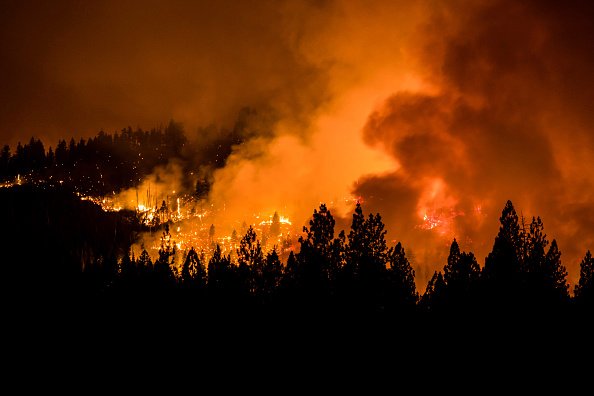Two Tree-Sparked Fires Prompt PG&E to Vow Faster Response Times

After alerting regulators to a second fire in a matter of days tied to a falling tree hitting one of its lines, PG&E promised Tuesday to act more quickly to shut down its system at the first sign of trouble in high fire threat areas.
The July 13 Dixie Fire, which has grown to a quarter million acres and is still raging, began several hours after a Douglas fir fell onto PG&E’s Bucks Creek 1101 line in the remote Feather River Canyon.
Critics have since faulted PG&E for not shutting down the line immediately after two fuses blew, cutting power to a nearby dam that morning.
When a lineman arrived several hours later, he found a fire had just started, apparently by the leaning tree hitting the still-live line. The decision to leave the power on came despite the fact that PG&E ranked Bucks Creek near the top of the company’s list for fire danger.
On Tuesday, PG&E acknowledged that its equipment likely played a role in a second fire, also in Plumas County, which began under similar circumstances to the Dixie Fire, but nine days later.
In its notice to state regulators, PG&E said it had picked up “alarms and other activity” that lasted for 80 minutes before power was partly cut on its Gansner 1101 power line the evening of July 22. It is unclear whether PG&E dispatched a technician or what triggered the partial shut down, however.
The ensuing Fly Fire, which erupted near Butterfly Valley Twain Road and Highway 70, soon merged with the Dixie Fire. PG&E told regulators on Monday that it was on hand when the U.S. Forest Service moved a tree that had been found resting on the Gansner Line.
After alerting regulators to a second fire in a matter of days tied to a falling tree hitting one of its lines, PG&E promised Tuesday to act more quickly to shut down its system at the first sign of trouble in high fire threat areas.
The July 13 Dixie Fire, which has grown to a quarter million acres and is still raging, began several hours after a Douglas fir fell onto PG&E’s Bucks Creek 1101 line in the remote Feather River Canyon.
Critics have since faulted PG&E for not shutting down the line immediately after two fuses blew, cutting power to a nearby dam that morning.
When a lineman arrived several hours later, he found a fire had just started, apparently by the leaning tree hitting the still-live line. The decision to leave the power on came despite the fact that PG&E ranked Bucks Creek near the top of the company’s list for fire danger.
On Tuesday, PG&E acknowledged that its equipment likely played a role in a second fire, also in Plumas County, which began under similar circumstances to the Dixie Fire, but nine days later.
In its notice to state regulators, PG&E said it had picked up “alarms and other activity” that lasted for 80 minutes before power was partly cut on its Gansner 1101 power line the evening of July 22. It is unclear whether PG&E dispatched a technician or what triggered the partial shut down, however.
The ensuing Fly Fire, which erupted near Butterfly Valley Twain Road and Highway 70, soon merged with the Dixie Fire. PG&E told regulators on Monday that it was on hand when the U.S. Forest Service moved a tree that had been found resting on the Gansner Line.

